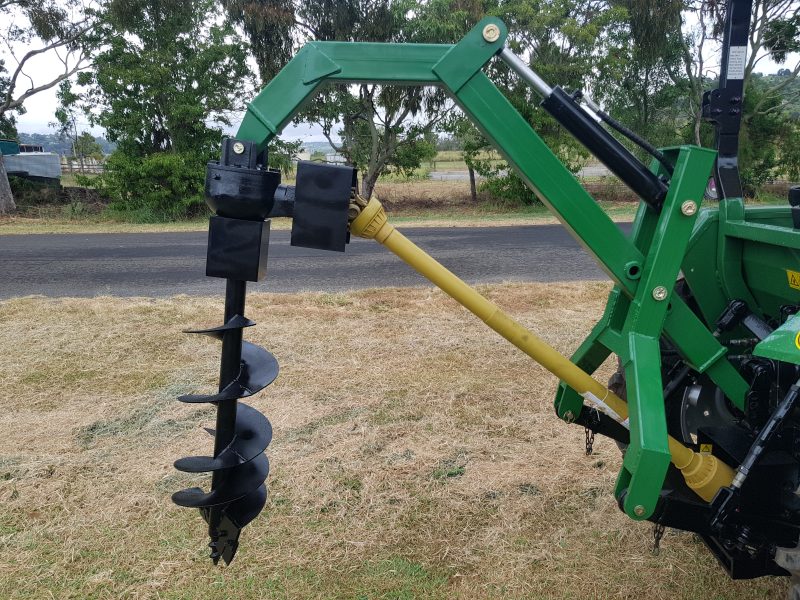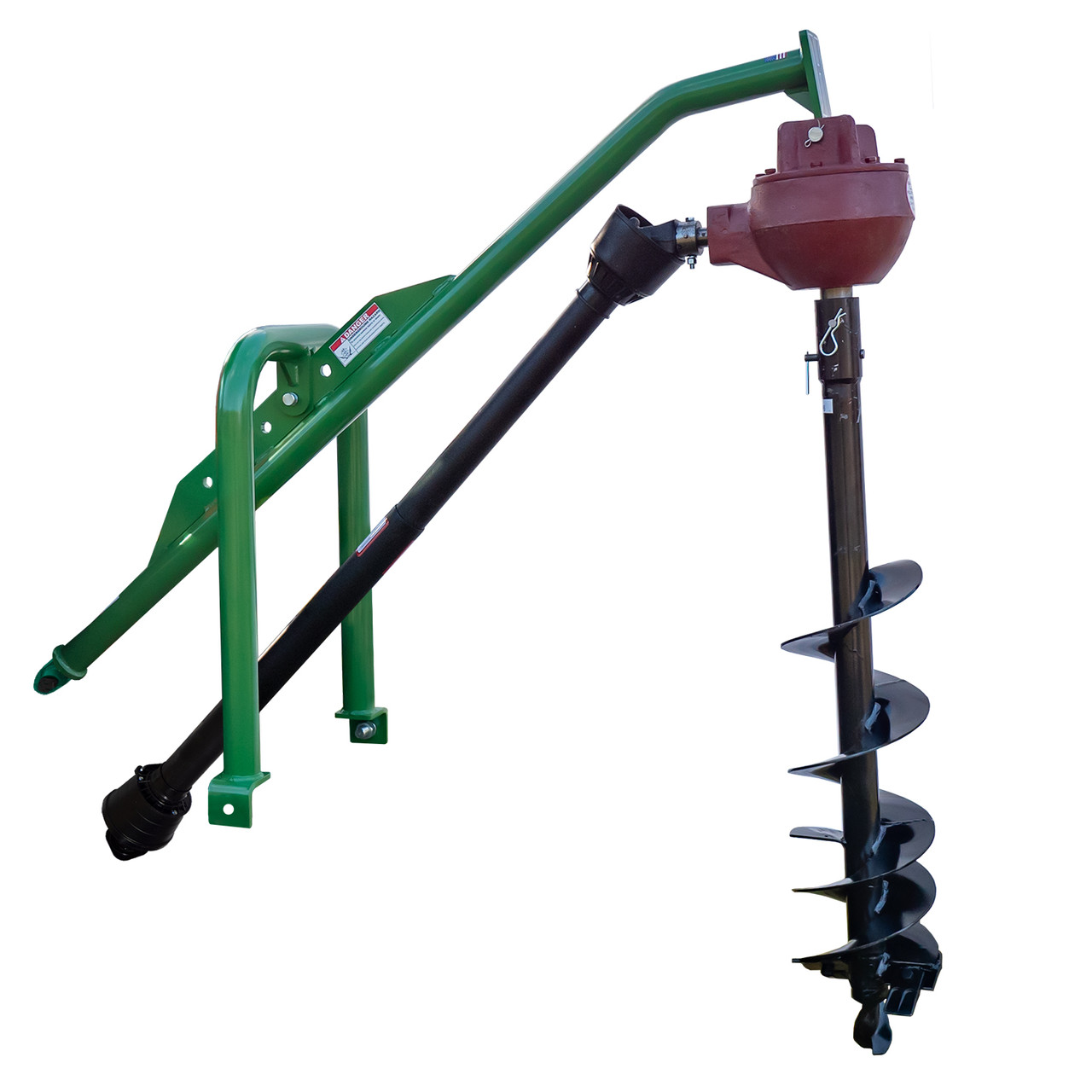Product Description
Product Description
KINGER earth auger application in Landscaping, Tree planting, Well boring, Foundation piles, Screw pile installations, Ground
source heat pumps, Pole and Mast Installations, Solar energy piling, Bridge pier drilling etc.
Features of KINGER Hydraulic Earth Auger Drill:
1.Huge range of earth drill to suit 1-50T excavators.
2.High quality Imported Hydraulic motors.
3.Heavy duty Planetary Reductions Gearbox with massive Diameter Output Bearing, Specially researched Gearbox design and
heat-treating skills to make auger with massive torque.
4. Non-dislodgement output shaft.
5.Specially designed auger flight for more earth removal.
Product Parameters
| Model | YDHMINI | YDH1500 | YDH2000 | YDH2500 | YDH4000 | YDH4500 | YDH5000 |
| Applicable(T) | 0.8-2T | 1-2 | 1.5-3 | 1.5-3 | 2-4 | 2-4 | 3-6 |
| Torque Range(Nm) | 305-1175 | 545-1580 | 656-2270 | 855-2510 | 1290-4580 | 1290-4580 | 1608-4890 |
| Oil pressure(bar) | 60-200 | 60-200 | 60-200 | 60-200 | 60-210 | 60-210 | 60-210 |
| Oil flow(lpm) | 12-45 | 20-75 | 30-75 | 30-75 | 40-95 | 40-95 | 40-95 |
| Speed (rpm) | 28-95 | 32-97 | 35-98 | 35-90 | 32-77 | 32-77 | 28-57 |
| Output shaft(mm) | 65Rd | 65Rd | 65Rd | 65Rd | 65Rd | 65Rd | 65Rd |
| Weight(kg) | 38 | 49 | 50 | 50 | 52 | 87 | 88 |
Certifications
Packaging & Shipping
Company Profile
HangZhou Xihu (West Lake) Dis.CHINAMFG Machinery Co.,Ltd.,was founded in 2571.Our main business include Earth auger, Log splitter, Break hammer and other attachment for excavator.
As a manufacturer,we own the professional R&D team and we have the most complete series of models in China.
Quality is our culture.We will not attract customers’ attention with low price. We insist on quality first,We provide products with high cost performance.
Trust you will like our quality,services if you buy 1 sample from us.
We have created our own brand “KINGER”. Our product has been exported to Germany, Denmark, Russia, Australia, Malaysia, Canada, United States and other countries and has been widely recognized by customers all over the world.
FAQ
Q: Are you a manufacturer?
A: Yes, We are an enterprise integrating research, development, production and sales.
Q: Are you sure that your products will fit my excavator?
A: Our drills can be adapted to different excavators. Show me your model number, and we can give you best solution.
Q:How to choose the correct model?
A:First of all, we need to know the model and tonnage of the excavator.
Second, we need to know the diameter and depth of the hole to be drilled.
Then, we need to know the working environment and the soil.
Finally, please tell us your desired speed and other requirements.
Q:What is the suitable soil for the drill?
A:Ordinary soil, Sandy soil, Clay, Land waste, Frozen earth, Backfill.
Exhibition
/* March 10, 2571 17:59:20 */!function(){function s(e,r){var a,o={};try{e&&e.split(“,”).forEach(function(e,t){e&&(a=e.match(/(.*?):(.*)$/))&&1
| After-sales Service: | Online Support Available |
|---|---|
| Warranty: | 18months |
| Certification: | CE, ISO9001:2015 |
| Condition: | New |
| Drill Hole Diameter: | 100mm – 1200mm |
| Drill Hole Depth: | 1m – 30m |
| Customization: |
Available
| Customized Request |
|---|

How does a post hole digger ensure precise and consistent hole depths?
A post hole digger incorporates various features and techniques to ensure precise and consistent hole depths. These elements help operators achieve the desired depth for each hole in a reliable and efficient manner. Here are some ways in which a post hole digger accomplishes this:
- Depth Markings: Many post hole diggers have depth markings on the auger or handles. These markings indicate the depth of the hole as the digger penetrates the ground. Operators can visually reference these markings to monitor the depth and ensure consistency across multiple holes.
- Adjustable Depth Settings: Some post hole diggers offer adjustable depth settings, allowing operators to pre-set the desired depth before digging. These settings can be easily adjusted using mechanisms such as locking pins or height-adjustable handles. By setting the depth beforehand, operators can ensure that each hole reaches the desired depth consistently.
- Stabilizing Mechanisms: Post hole diggers often feature stabilizing mechanisms or components to maintain stability and prevent excessive digging beyond the desired depth. These mechanisms can include stabilizer bars, braces, or flanges. They help control the downward movement of the digger and ensure that the hole depth remains consistent throughout the digging process.
- Operator Control and Technique: The operator plays a crucial role in achieving precise and consistent hole depths. With experience, operators learn to control the digger’s downward pressure, speed, and angle to maintain a consistent digging depth. They can adjust the technique based on the soil conditions, resistance encountered, and the depth markings or settings on the digger.
- Monitoring and Adjustments: Throughout the digging process, operators closely monitor the depth and make necessary adjustments as required. If a hole is not reaching the desired depth, the operator can apply more downward pressure or adjust the angle of the digger. By actively monitoring and making adjustments, operators ensure that each hole achieves the intended depth.
- Consistent Auger Design: The design of the auger itself contributes to achieving consistent hole depths. Augers are typically manufactured with uniform blade lengths and spacing. This uniformity helps ensure that the digger cuts through the soil consistently, resulting in holes with consistent depths.
By incorporating depth markings, adjustable depth settings, stabilizing mechanisms, operator control and technique, monitoring, and consistent auger design, a post hole digger facilitates precise and consistent hole depths. These features and techniques work together to ensure that each hole meets the desired depth requirements, whether it’s for installing fence posts, structural supports, or other applications.

Can post hole diggers be adapted for use in both residential and commercial projects?
Yes, post hole diggers are versatile tools that can be adapted for use in both residential and commercial projects. Their design, features, and capabilities make them suitable for a wide range of applications, regardless of the scale or nature of the project. Here are some reasons why post hole diggers can be effectively used in both residential and commercial projects:
- Size Options: Post hole diggers are available in various sizes to accommodate different project requirements. They come in compact, lightweight versions ideal for residential use, as well as larger, heavy-duty models suitable for commercial projects. The availability of different size options ensures that post hole diggers can be matched to the specific needs of the project, whether it’s a small backyard fence installation or a large-scale commercial construction project.
- Adjustable Depth and Diameter: Many post hole diggers feature adjustable depth and diameter capabilities. This adaptability allows users to customize the digging parameters based on the specific project requirements. Whether it’s digging shallow holes for residential fence posts or deeper holes for commercial applications such as signposts or structural supports, post hole diggers can be adjusted to meet the desired depth and diameter specifications.
- Soil Compatibility: Post hole diggers are designed to handle various soil types commonly encountered in both residential and commercial projects. They can effectively dig holes in soil compositions such as clay, loam, gravel, or sandy soils. This versatility ensures that post hole diggers can be used in different geographical locations, whether it’s a residential backyard or a commercial construction site.
- Portability: Post hole diggers are generally designed to be portable and easy to transport. They can be maneuvered and operated in different project locations, whether it’s a residential property or a commercial worksite. The portability of post hole diggers allows for flexibility and convenience in tackling various projects, making them suitable for both residential and commercial applications.
- Efficiency and Time Savings: In both residential and commercial projects, efficiency and time savings are essential. Post hole diggers offer significant advantages in this regard. Their mechanical action, whether manual or powered, allows for faster and more efficient digging compared to manual methods. This translates to time savings and increased productivity, benefiting both residential homeowners and commercial contractors.
- Multiple Applications: Post hole diggers have multiple applications beyond residential or commercial projects. They can be utilized in various industries such as agriculture, landscaping, and construction. Their versatility makes them valuable tools for tasks like planting trees, installing poles, erecting signs, or setting up outdoor structures. This wide range of applications further highlights the adaptability of post hole diggers across different project types and sectors.
Overall, post hole diggers can be effectively adapted for use in both residential and commercial projects. Their size options, adjustable depth and diameter capabilities, soil compatibility, portability, efficiency, time savings, and multiple applications make them versatile tools that can tackle a wide range of projects, regardless of the residential or commercial context.

What are the key components of a manual post hole digger?
A manual post hole digger consists of several key components that work together to facilitate the digging process. Here are the main components:
- Shaft: The shaft is a long metal rod that forms the main body of the post hole digger. It provides the structural support and stability while digging. The shaft is typically made of steel or another durable material to withstand the forces exerted during digging.
- Handles: At the top of the shaft, there are two handles positioned opposite each other. The handles are designed for the operator to grip and apply downward force while digging. They provide leverage and control, allowing the operator to maneuver the post hole digger effectively.
- Auger Blades: The auger blades are the cutting or digging elements of the post hole digger. They are attached to the bottom end of the shaft and are responsible for penetrating the ground and removing soil. Auger blades are typically made of hardened steel to withstand the abrasive nature of soil and provide durability.
- Blade Spacing: The spacing between the two auger blades is an important aspect of a manual post hole digger. It determines the width of the hole being dug. The blade spacing can vary depending on the specific model or intended use of the digger.
- Twist or Spiral Design: The auger blades are shaped in a twist or spiral pattern. This design allows them to efficiently move through the soil as they rotate. The twisting motion helps break up the soil and facilitates the removal process.
- Blade Point: The bottom end of each auger blade usually comes to a sharp point. This point helps initiate the penetration into the ground, allowing the blades to start digging and create a hole.
When using a manual post hole digger, the operator grips the handles, positions the auger blades at the desired location, and applies downward force while simultaneously twisting the digger. This action drives the blades into the ground, loosening the soil. The operator then lifts the digger out of the hole, bringing the loosened soil to the surface.
By understanding the key components and their functions, operators can effectively utilize a manual post hole digger to dig holes for various purposes.


editor by CX 2024-01-19